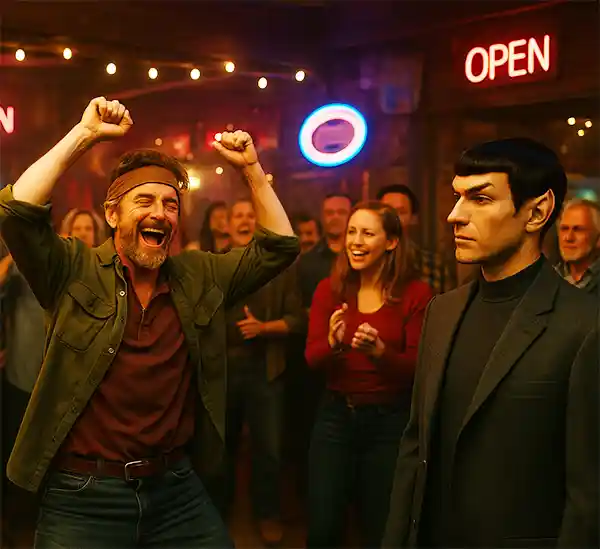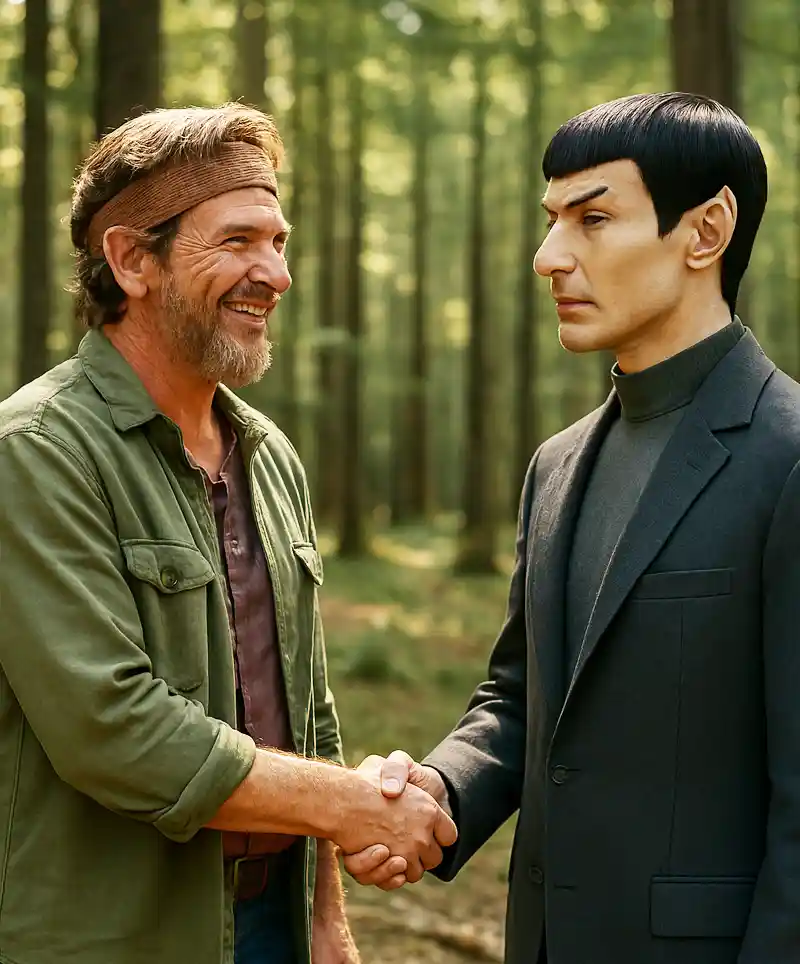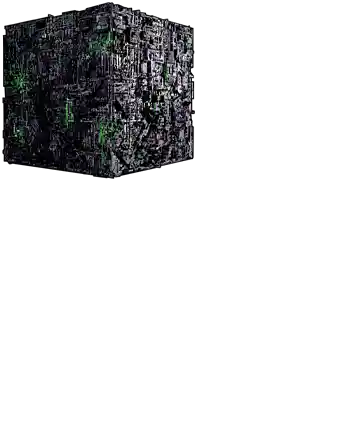Zefram Cochrane, Warp Drives, and Vulcan Eyebrow Raises
Every year on April 5th, Trekkies and curious Earthlings alike celebrate First Contact Day, the moment in Star Trek lore when humanity officially meets intelligent alien life—and somehow doesn't immediately mess it up. The historical hero of the day? A scruffy, slightly buzzed genius named Zefram Cochrane who just wanted to listen to some Steppenwolf and fund his retirement with warp drive money.
So Who Was Zefram Cochrane, Anyway?
Dr. Zefram Cochrane was a human scientist born in the early 21st century—aka the near future for us, and the somewhat grungy post-World War III era for him. His claim to fame? Inventing the warp drive, a device that lets starships go faster than light by bending space-time like a yoga instructor on espresso.
Cochrane wasn’t your classic sci-fi scientist. He wasn’t suave or sleek or particularly sober. He liked jukebox rock, casual flannel, and avoiding responsibility. He built the Phoenix, humanity’s first warp-capable ship, inside a repurposed nuclear missile silo in Montana (which feels on-brand for the 21st century, honestly).
The Day Humanity Looked Less Like a Hot Mess
Let’s set the stage: Earth, post-World War III. Entire countries had gone belly-up, millions were lost, and the survivors were living in the ashes of what was once a functioning civilization. The global economy? Don’t ask. The environment? Rough shape. Politics? Imagine a family reunion where everyone brought flamethrowers instead of potato salad.
Enter Zefram Cochrane, a guy with wild hair, a wild idea, and a moderately wild liver. Against this backdrop of chaos and societal hangovers, he did something no one thought possible—he fired up a homemade warp engine. Not exactly OSHA-approved, but hey, desperate times.
 On April 5, 2063, Cochrane’s spacecraft, the Phoenix, made its historic warp flight, leaving a shiny trail of faster-than-light particles in its wake. It wasn’t sleek. It wasn’t pretty. It was a refurbished nuclear missile with a cockpit bolted on, held together with sheer willpower, duct tape, and a whole lot of 20th-century engineering. But it worked.
On April 5, 2063, Cochrane’s spacecraft, the Phoenix, made its historic warp flight, leaving a shiny trail of faster-than-light particles in its wake. It wasn’t sleek. It wasn’t pretty. It was a refurbished nuclear missile with a cockpit bolted on, held together with sheer willpower, duct tape, and a whole lot of 20th-century engineering. But it worked.
And that one brief warp jump changed everything.
Far away, a Vulcan survey ship noticed the warp signature—the alien equivalent of someone flipping on a lighthouse in a sea of static. They realized that the strange, primitive, explosion-prone species called "humans" had cracked faster-than-light travel. Which, in the galactic neighborhood, is sort of like a toddler learning how to hotwire a Ferrari. Impressive… and a little alarming.
But Vulcans aren’t known for being rash. So they did what Vulcans do best: they calmly landed their ship outside Bozeman, Montana, probably double-checked their translators, and stepped out to say hello. Meanwhile, Cochrane and his team were busy recovering from the flight and/or hangovers.
The first meeting was...awkward. Cochrane, not known for his grace or sobriety, was stunned. Not just because aliens had landed, but because they looked like people with glued-on ears (his words, not theirs). But a handshake was exchanged, a few eyebrows were raised (the Vulcans’ specialty), and just like that, humans weren’t alone anymore.
No speeches. No fireworks. Just a small group of hopeful survivors, a grumpy genius with a hangover, and an alien species wondering what they’d just gotten themselves into.
That’s the beauty of First Contact Day. It’s not about polished heroes saving the day with perfect timing and clean uniforms. It’s about flawed people doing one incredible thing at the right time—and the universe noticing.
And it all started in Montana. Because apparently, if aliens are going to land anywhere, they’ll pick a place with good views, wide open spaces, and someone blasting rock 'n’ roll at full volume from a missile silo.
A Drunken Hero Saves the Future (with a Little Help from the Future)
You might be wondering: How did someone like Cochrane—a man who considered warp travel a ticket to "drinking with aliens"—end up as the face of humanity’s biggest leap forward?
Well, in the film Star Trek: First Contact (1996), a Borg time-travel plot threatened to derail Cochrane’s launch. The Borg, always looking to “assimilate” civilizations and ruin a perfectly good Tuesday, traveled back in time to prevent the warp flight—and thus, the Vulcans’ visit. Thankfully, the USS Enterprise-E crew followed them and ensured Cochrane launched on schedule.
Despite being more interested in whiskey than destiny, Cochrane pulled it together, hit warp speed, and returned to Earth in time to meet the Vulcans. He even managed to keep his pants on, which, for him, was a win.
Why It Matters
First Contact Day isn’t just a celebration of fictional interstellar diplomacy. It’s a hopeful nod toward a future where humanity eventually stops arguing over parking spaces long enough to discover space travel and make friends across the galaxy. In the Star Trek universe, First Contact leads to the formation of the United Federation of Planets, where humans, Vulcans, Andorians, and a whole host of aliens team up to explore space, solve cosmic mysteries, and occasionally throw diplomatic shade.
It’s also a reminder that the future isn’t built solely by pristine heroes or utopian societies—it’s built by flawed people with wild dreams and even wilder hair.
Fun First Contact Day Traditions (for the Hardcore Nerd or Casual Admirer)
- Rewatch Star Trek: First Contact (don’t forget popcorn and Vulcan salute practice)
- Crank up “Magic Carpet Ride” in honor of Cochrane’s pre-launch playlist
- Toast to the future with a drink of your choice—just not Romulan Ale, unless you have a strong stomach
- Build your own warp drive… or at least a model rocket
- Mark Bozeman, Montana, on your travel bucket list (just in case you want to reenact the moment in style)
First Contact Day is less about sci-fi and more about sci-why not? It's a celebration of what could happen if we keep striving, inventing, and maybe, just maybe, behave well enough that the galaxy doesn’t hit us with a restraining order. Here's to Zefram Cochrane—reluctant hero, warp trailblazer, and the man who literally took humanity to the stars... after one more drink.






 On April 5, 2063, Cochrane’s spacecraft, the Phoenix, made its historic warp flight, leaving a shiny trail of faster-than-light particles in its wake. It wasn’t sleek. It wasn’t pretty. It was a refurbished nuclear missile with a cockpit bolted on, held together with sheer willpower, duct tape, and a whole lot of 20th-century engineering. But it worked.
On April 5, 2063, Cochrane’s spacecraft, the Phoenix, made its historic warp flight, leaving a shiny trail of faster-than-light particles in its wake. It wasn’t sleek. It wasn’t pretty. It was a refurbished nuclear missile with a cockpit bolted on, held together with sheer willpower, duct tape, and a whole lot of 20th-century engineering. But it worked.








 "Sláinte!" is a traditional Irish expression used as a toast, equivalent to "Cheers!" in English.
"Sláinte!" is a traditional Irish expression used as a toast, equivalent to "Cheers!" in English.